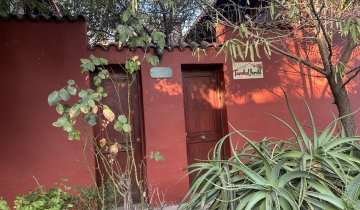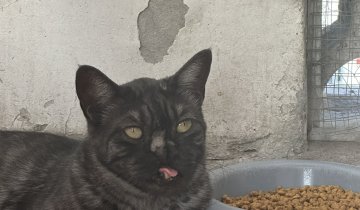 Diana Webster is on a mission: She wants the world’s stray animals to be cared for humanely. Of course, this is a huge goal. So she’s focusing on tourist areas and enlisting the help of tourists and travel professionals around the world to find a humane solution to the sad problem. She’s formed an organization called Humane Advisor to consult on stray issues, and is also the driving force behind the growing LinkedIn group Business Professionals for Animal Welfare.
Diana Webster is on a mission: She wants the world’s stray animals to be cared for humanely. Of course, this is a huge goal. So she’s focusing on tourist areas and enlisting the help of tourists and travel professionals around the world to find a humane solution to the sad problem. She’s formed an organization called Humane Advisor to consult on stray issues, and is also the driving force behind the growing LinkedIn group Business Professionals for Animal Welfare.
Diana took some time out of her campaigning efforts to answer my questions about her work.
Teresa Bergen: Tell me just a little about the dog in Mexico that started it all.
Diana Webster: In 2006, during a vacation in Cancun, I met a female dog that was very obviously starving to death. She came up to me and nuzzled my hand. I believe she was telling me in her own way, “See how I’m suffering? Please find a way to help me and the millions of other dogs like me!” It was very frustrating being in a foreign country and not knowing how to save her. I still get teary about it. So I got involved with helping strays and telling people like me how to help strays because of her, the little white dog I call Nova.
Teresa: How did Humane Advisor come about?
Diana: I wanted to let tourists know how they can help strays because there was no information available about what to do when I met Nova. I also wanted to tell the stories of people like Ricardo Pimentel of Tierra de Animales sanctuary near Cancun, and Sue Silva of Playa Animal Rescue in Playa del Carmen, who save hundreds and hundreds of animals in the Yucatan every year. Raising awareness and educating people on the challenges and the solutions is crucial for change to happen and that’s what Humane Advisor is all about. And very importantly, I wanted to offer tourist destinations, hotels/resorts, and travel companies some ideas about what they could do to help, too. To that end, I created a Hotel and Resort Guide to Feral and Stray Management that is being referenced by several large tour operators and hotel chains in Europe and that is available for download at Humane Advisor.com.
It’s been an amazing journey from the first few blogs I wrote sharing my personal experience with Nova. I’ve had the honor of interviewing many dedicated animal advocates and business people. My website and blog has received thousands of views from visitors located in nearly 100 countries so it’s clear that there are a lot of people out there who have had experiences like mine with a stray that deeply affected them, not only just at the time of the encounter but also long after they returned home from their vacations. At Humane Advisor, we encourage anyone who has had an encounter to contact us and share their story and also share on social media. Sharing your story could inspire other people to get involved and help.
Teresa: How do you find people to connect with and promote your cause of better lives for strays?
Diana: I’m currently conducting a campaign to bring data from my 2013 Humane Research Council-funded research report and survey of tourists who encountered stray cats and dogs while vacationing, to the attention of the tourism industry. Travel businesses need to know that their customers care about animals at tourist destinations. Especially because the survey showed that 34% of tourists surveyed were upset by seeing stray cats and dogs while a whopping 41% were less likely to return to tourist destinations with strays, numbers that clearly present what could be a substantial economic impact on tourism. In my campaign, I’m asking travel companies to sign a letter to tourism offices at destinations where strays are common, asking them to partner with local animal welfare groups, and provide resources to fund sterilization campaigns, rescue and rehabilitation, and education programs for strays. Another great solution that tourist destinations could invest in would be cost-effective new technologies like Spay Food™ which is a non surgical sterilization formula being developed by 600 Million Stray Dogs Need You. The campaign asks for help for the strays not only because it is the right thing to do but also because it affects tourism’s bottom line.
 Teresa: What has been the response to your campaign so far?
Teresa: What has been the response to your campaign so far?
Diana: Non-U.S. travel companies have been surprisingly more receptive but the initial response from several tour operators in the U.S. is promising and has already led to several exciting new programs. It would be great if a tourism industry leader (or leaders) would step forward to champion this campaign. Someone high profile like Richard Branson or influential like TripAdvisor President Stephen Kaufer could get the attention of the tourism industry to get on board for helping strays. That would be awesome!
Teresa: What is your background in the tourism industry?
Diana: I worked with a major airline for twenty years where I was in sales and marketing—outside sales to travel agencies and corporations and reservation sales to passengers. Recently, I have done marketing consulting for travel industry vendors, in between going back to school to become an attorney and trying to save all the stray dogs in the world. J
Teresa: I’ve noticed an attitude like people in the developing world have bigger problems than worrying about animal suffering. Do you think this attitude is changing?
Diana: Definitely. At the spay/neuter clinics in Mexico that I’ve volunteered at, hundreds of local people in some of the poorest neighborhoods, would wait for hours in the hot sun to bring their beloved family pets or the village dog for surgery. I’ve seen pillow cases full of stray kittens that locals gathered up to be sterilized and cardboard boxes full of puppies brought in to be fixed. It’s obvious they want their animals to be cared for along with their families because not only do they love their pets but also because strays present health and safety issues for communities in developing countries. Which is why when I get the question “why don’t you work to help people instead of animals?” my answer is “helping animals helps people.”
Teresa: Any big successes you’d like to share?
Diana: Yes! Humane Advisor recently began working with tour operator AdventureWomen, to take their groups to visit animal welfare groups at destinations they travel to like Tanzania, Uganda, and Bhutan to raise awareness and encourage support. The program is also now going to be offered to tour operators at many other tourist destinations around the world.
Teresa: Anything else you’d like to say about your work?
Diana: I’d just like to say that if every tourist that cared about animals told their airline, hotel, tour operator, and favorite travel review sites that tourism needed to step up and support saving animals, it could change the world for strays. The uproar over the Sochi dogs was huge and made a lot of people take notice and take action. Keep the outrage going! There are mass killings of strays like Sochi happening at nearly every major international sporting event and routinely at your favorite tourist destination. Heck, we euthanize millions of healthy stray dogs here in the U.S. every year. Use your buying power and let any business that you patronize know that you will vote with your wallet by buying from companies that are committed to animal welfare and share your commitment with your network of family, friends, and colleagues. Get animal welfare on every business agenda. Start now because one person really can make a difference. Your voice could be the tipping point for saving strays.



